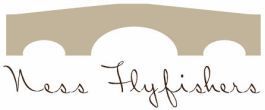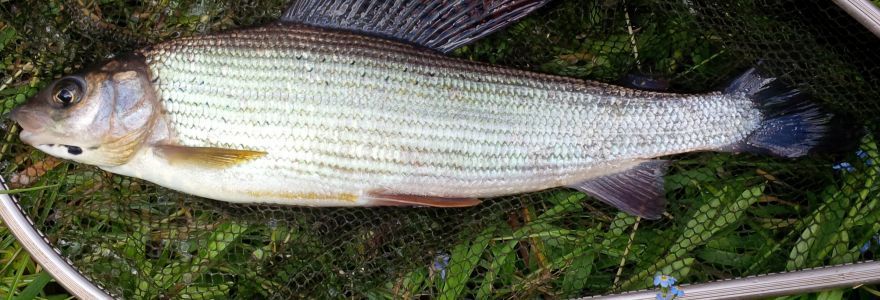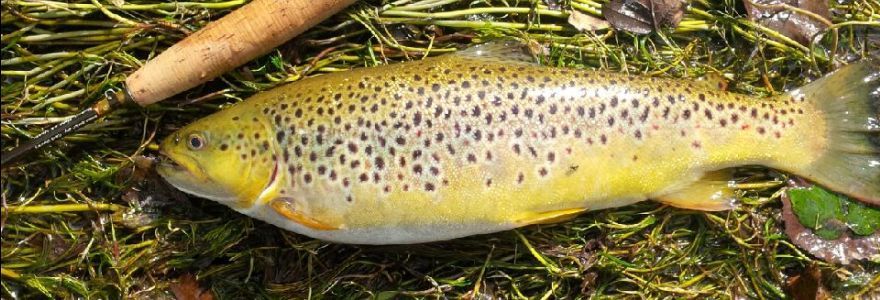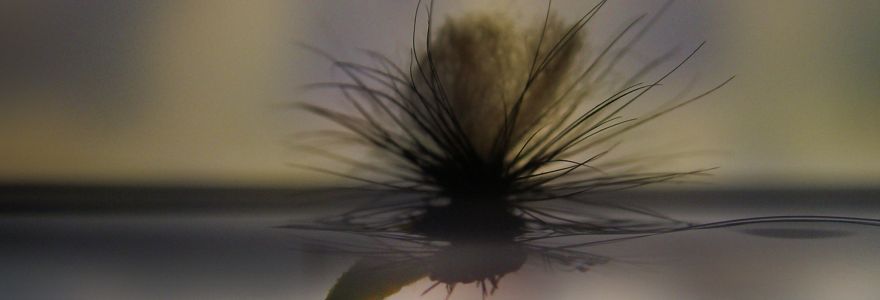Introduction & History
The Club was formed in 2014, following on from a club of the same name that had been founded in 1990 by Michael Smith Turnbull who sadly died in 2014. Mick was a Yorkshireman and a countryman, who knew his flora, fauna and above all knew his own mind. Throughout his life he worked in the countryside: on large estates as a gamekeeper and latterly as a fisheries officer with the Environment Agency. Mick approached Hugh Murray Wells in 1990 establishing the club on about three miles of the River Rye downstream of Ness Hall in North Yorkshire; in 1993 he secured a lease from the Nunnington estate to fish water immediately upstream of the Ness beats.
The Club House, at Ness Hall, was the former blacksmith’s workshop: an imposing, formerly two-story, stone structure with slate roof, it has a multi-fuel stove, water and electricity. We keep some of the club’s equipment there, use it to book onto beats and record catches, and it is the heart of the club. On cold winter mornings, in February and early March, club members will drink their coffee and chat before heading out to tend the river banks by removing the leftovers from any winter floods and pruning back any over hanging branches that may require attention.
Over the years the previous club grew in size and at its peak had about 50 members – a mixture of ‘full’ members with rights to fish anywhere on of the club’s water: the three Ness beats, the two Nunnington ‘High Water’ beats or the two Nunnington ‘Low water’ beats and members who chose to fish on particular sections of the river. The original club had a very diverse membership, as does our current club. Though mostly male (and this is to be regretted) our new club also has around 50 members from all kinds of occupations and backgrounds. It is a club where you can learn about life and not just about fly-fishing.
The character of the river changes over the course of the 5 miles. It runs through rich agricultural land and in some places is bounded by a mixture of willow and alder trees whereas on the lower beats (especially Ness beat 3) the river cuts a deep channel through the soft earth. Although there is a small but healthy stock of native trout and resident grayling, we also have some dace, chub, eel, some pike and occasional barbel – though the coarse fish are mostly on the lower beats. We stock the river on an annual basis with (now triploid) trout of between 11 and 13 inches and this ensures good sport throughout the season. The trout are sourced locally and are distributed along the length of our water (excepting Ness beat 3).
We also have white-clawed crayfish in the river and these, together with the pods of grayling, give a good indication of the health of the river – a status confirmed by regular kick samples taken by the Environment Agency. It is true that we also see the occasional otter but as Mick Turnbull used to say: “…if you have fish you will have otters and if there are otters it means there are fish – so don’t worry!” We are blessed with an abundance of other wild life, not least some beautiful kingfishers which are always a delight to see.
The fishing is exclusively upstream dry-fly and nymph fishing. We do allow wading (except for grayling in the winter months) but encourage members to exercise discretion – both for reasons of personal safety and respect for the river bed (and all that may be found there).
John Ditch
Chairman
The Club House, at Ness Hall, was the former blacksmith’s workshop: an imposing, formerly two-story, stone structure with slate roof, it has a multi-fuel stove, water and electricity. We keep some of the club’s equipment there, use it to book onto beats and record catches, and it is the heart of the club. On cold winter mornings, in February and early March, club members will drink their coffee and chat before heading out to tend the river banks by removing the leftovers from any winter floods and pruning back any over hanging branches that may require attention.
Over the years the previous club grew in size and at its peak had about 50 members – a mixture of ‘full’ members with rights to fish anywhere on of the club’s water: the three Ness beats, the two Nunnington ‘High Water’ beats or the two Nunnington ‘Low water’ beats and members who chose to fish on particular sections of the river. The original club had a very diverse membership, as does our current club. Though mostly male (and this is to be regretted) our new club also has around 50 members from all kinds of occupations and backgrounds. It is a club where you can learn about life and not just about fly-fishing.
The character of the river changes over the course of the 5 miles. It runs through rich agricultural land and in some places is bounded by a mixture of willow and alder trees whereas on the lower beats (especially Ness beat 3) the river cuts a deep channel through the soft earth. Although there is a small but healthy stock of native trout and resident grayling, we also have some dace, chub, eel, some pike and occasional barbel – though the coarse fish are mostly on the lower beats. We stock the river on an annual basis with (now triploid) trout of between 11 and 13 inches and this ensures good sport throughout the season. The trout are sourced locally and are distributed along the length of our water (excepting Ness beat 3).
We also have white-clawed crayfish in the river and these, together with the pods of grayling, give a good indication of the health of the river – a status confirmed by regular kick samples taken by the Environment Agency. It is true that we also see the occasional otter but as Mick Turnbull used to say: “…if you have fish you will have otters and if there are otters it means there are fish – so don’t worry!” We are blessed with an abundance of other wild life, not least some beautiful kingfishers which are always a delight to see.
The fishing is exclusively upstream dry-fly and nymph fishing. We do allow wading (except for grayling in the winter months) but encourage members to exercise discretion – both for reasons of personal safety and respect for the river bed (and all that may be found there).
John Ditch
Chairman
Mail: mymail@mailservice.com
Phone: 555-555-5555



